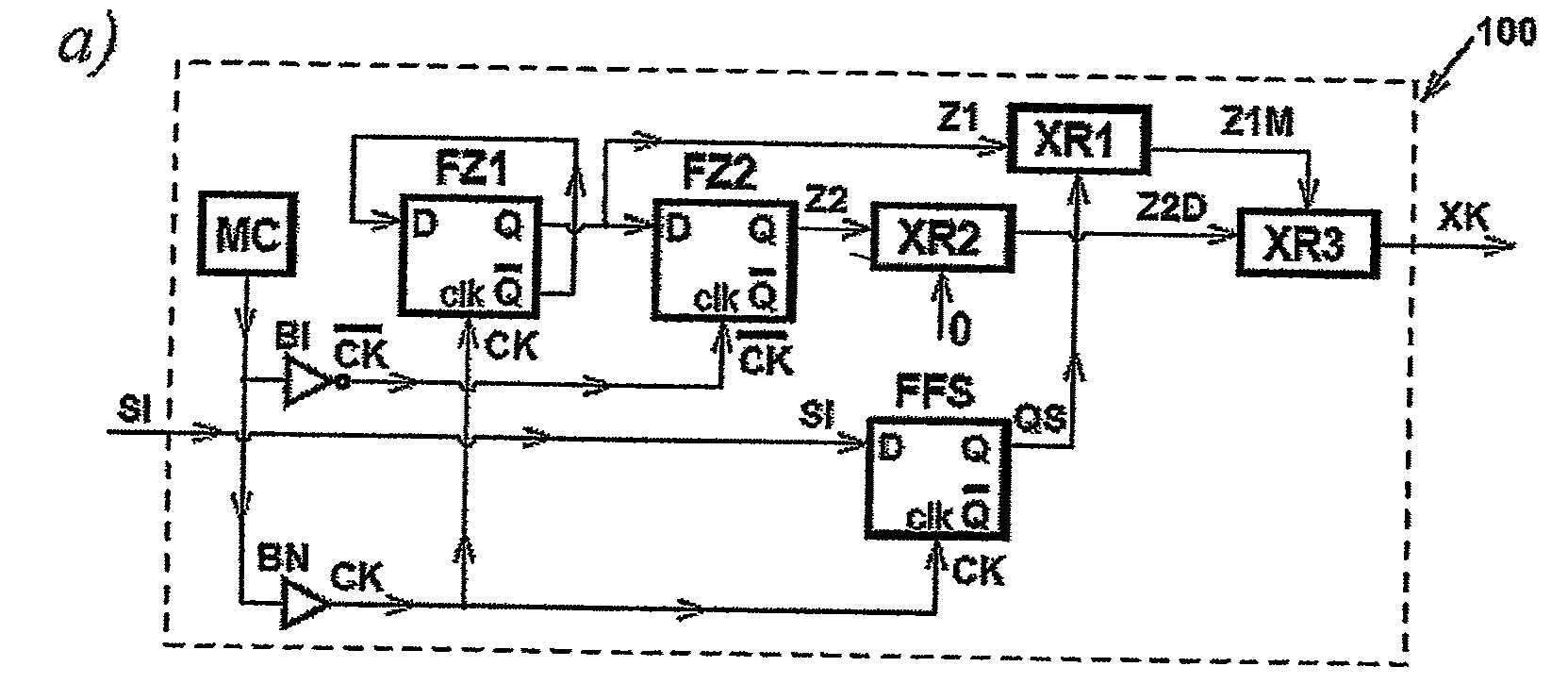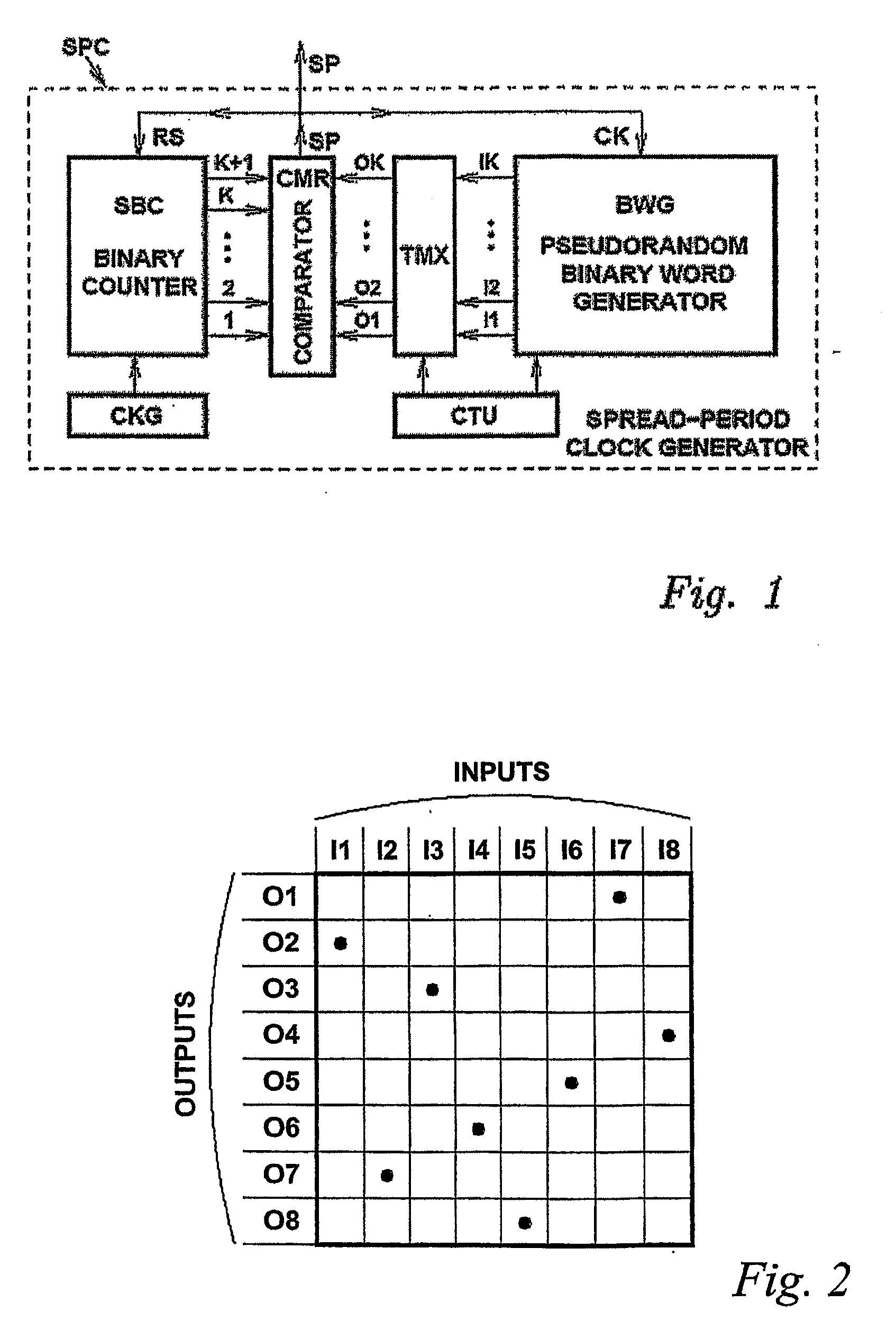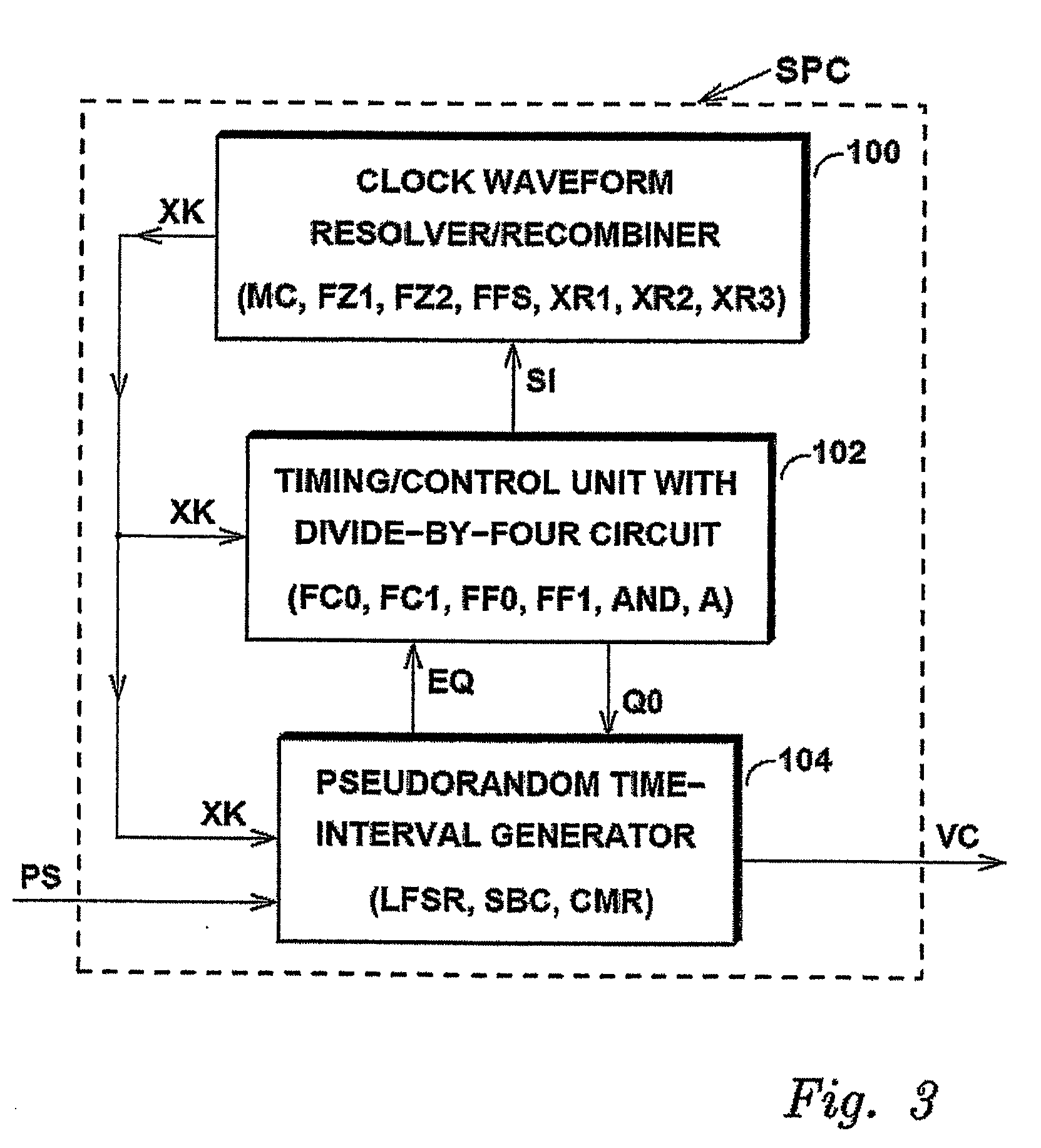Spread-period clock generator
a pulse train and generator technology, applied in the direction of pulse generation with predetermined statistical distribution, pulse automatic control, pulse technique, etc., can solve the problem of not being able to assign a distinct waveform to each waveform
- Summary
- Abstract
- Description
- Claims
- Application Information
AI Technical Summary
Benefits of technology
Problems solved by technology
Method used
Image
Examples
example
[0081]Assume that an initial ‘negative’ state {C0} of the counter SBC has been selected as
{C0}={1 1 1 0 1}
[0082]Neither of the first four ‘non-positive’ counter states
{1 1 1 0 1}, {1 1 1 1 0}, {1 1 1 1 1}, {0 0 0 0 0}
corresponds to one of the allowable ‘positive’ LFSR states; therefore, the shortest time interval will be obtained when {S*}={0 0 0 1}. The above four states will form the preamble associated with the selected initial SBC state {C0}, which will determine the duration of the shortest time interval.
[0083]For example, if the frequency of the master clock MC equals 100 MHz, then the shortest time interval will be either 40 ns (if there is no delay in the pulse train XK) or 45 ns (if a delay step has been introduced into the pulse train XK).
[0084]Similarly, because the greatest value represented by an allowable LFSR state {S*} is
PUM
 Login to View More
Login to View More Abstract
Description
Claims
Application Information
 Login to View More
Login to View More - R&D
- Intellectual Property
- Life Sciences
- Materials
- Tech Scout
- Unparalleled Data Quality
- Higher Quality Content
- 60% Fewer Hallucinations
Browse by: Latest US Patents, China's latest patents, Technical Efficacy Thesaurus, Application Domain, Technology Topic, Popular Technical Reports.
© 2025 PatSnap. All rights reserved.Legal|Privacy policy|Modern Slavery Act Transparency Statement|Sitemap|About US| Contact US: help@patsnap.com



